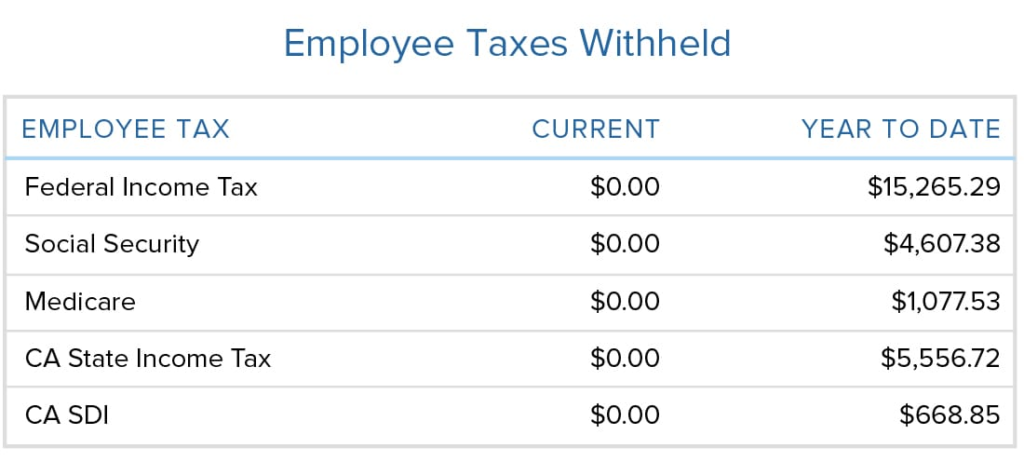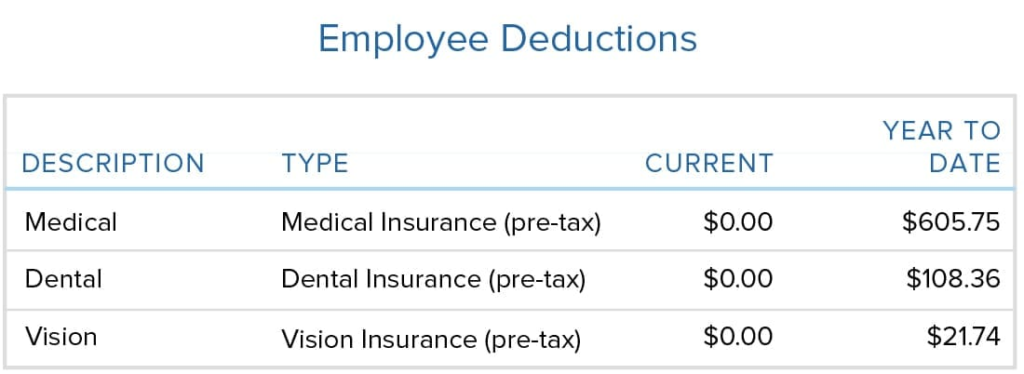I know that we all love payday, but how often do you actually take an in-depth look at your pay stub? It is easy for your eyes to immediately go to the bold number at the bottom of the page, but there are so many other factors to look into when reading your pay stub. Doing so can give you some insight on where exactly your deductions are going.
It can be hard to understand what is what when there are so many moving pieces. In this weeks Tuesday Tip, we will be going over a typical paycheck so that you know exactly where your money is going.
Employee Information

The first thing that you will see on your paystub is employee and employer information. You will also see the pay period so that you know what time period you are receiving earnings for. Gusto, the payroll platform that we partner with at SPB, also allows employees to split their pay into separate bank accounts, making it easy to put a fraction of your paycheck into savings or investments. You will also be able to see exactly how much is deposited into each account from that pay period in this section of your pay stub.
Employee Earnings
On this part of the paystub, you will see your hourly rate and hours worked, or your salary. If you are a salaried employee, your hours are defaulted to 40 per week. For hourly employees, this part of the pay stub will also show overtime. You will also see any bonuses or commissions for the pay period on this part of the stub. It is very important to note that this will reflect your gross earnings, which is what you make before deductions, taxes, and contributions.
Employee Taxes Withheld

This includes taxes that are taken out of your gross earnings and will be on your W-2 when you receive it for tax filing purposes. Withholding tax means that you pay-as-you-go. The government withholds three types of taxes from your earnings.
- Federal Income Tax: Your federal income tax can be calculated through your W-4 form. There are 3 things that determine how much you withhold – marital status, number of allowances, and compensation.
- Social Security: This tax pays for federal retirement and benefits. It is calculated as 6.2% of your gross earnings.
- Medicare: This tax provides federal health insurance for Americans 65 and older. It is calculated as 1.45% of your gross earnings if you make under $200k annually, and 2.35% if you make more than 200k.
Employer Taxes
The next section you will see includes the taxes that are taken from your employer. These do not affect your net earnings. The important take away from this section is that these amounts are the employers burden, not the employee. Because the employer pays taxes on behalf of the employee, the cost of an employee is actually higher than their gross earnings.
Employee Deductions

In this section, you will see your retirement, healthcare, and any other benefits reductions. This can include medical, dental, vision, or any other type of insurance plan your company offers.
Employer Contributions
This includes any of the contributions that your employer pays towards your retirement, healthcare, or any other benefits.
Summary

The summary section shows your gross earnings, your pre-tax deductions, taxes, post-tax deductions, reimbursements, and your total check amount (your net earnings). It shows you clearly where your earnings are going.
Reading your pay stub may seem confusing at first, but it does not have to be. We hope that this short blog post helps you read your pay stubs and understand fully where your hard-earned money is going. Keep up the good work!


